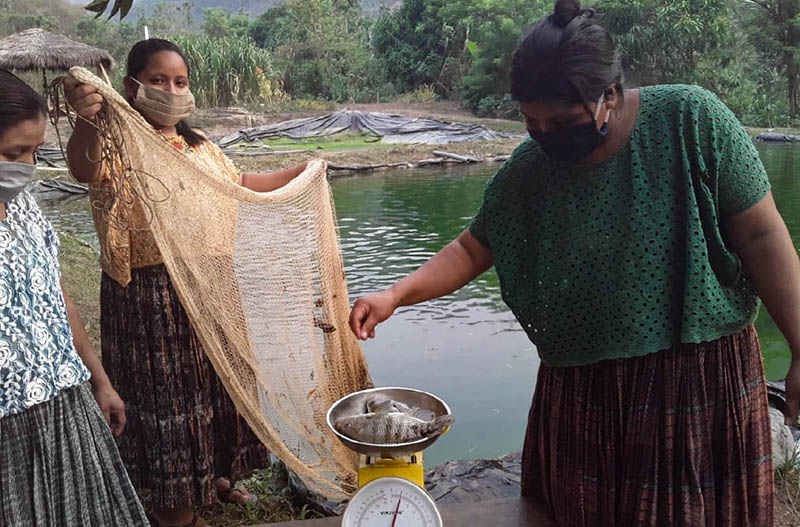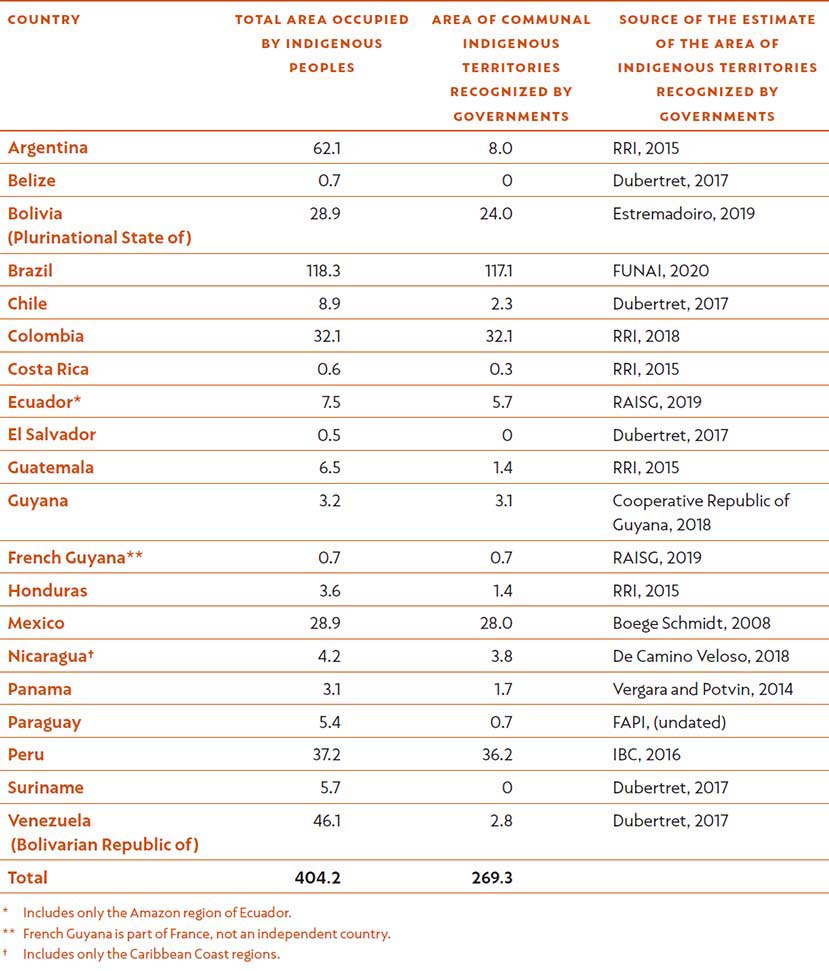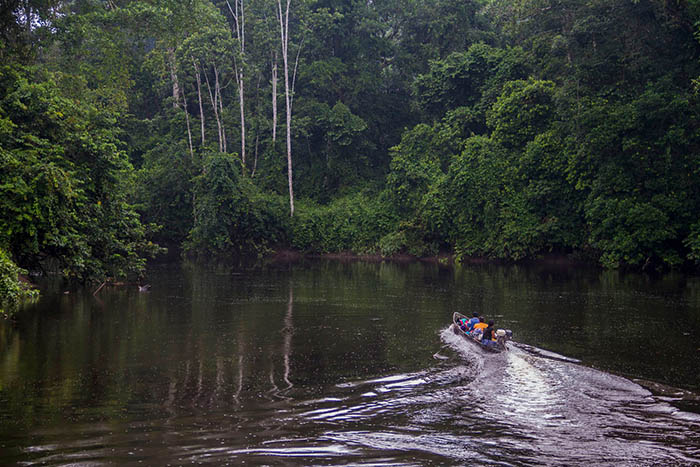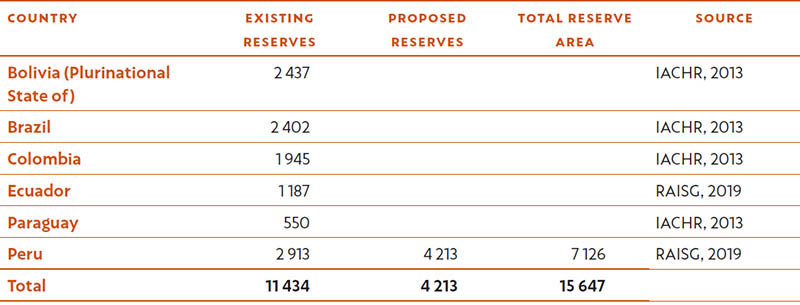The importance of the territories where indigenous and tribal peoples are involved in communal forest governance
The territories where indigenous and tribal peoples engage in communal forest governance are critical due to:
- their huge size;
- the large amounts of carbon they capture and store;
- their great biodiversity;
- their great wealth and cultural diversity; and
- their potential for culturally appropriate forms of rural development and for meeting the Sustainable Development Goals (SDGs).

Indigenous Reserve of San Lorenzo de Caldono, Department of Cauca, Municipality of Caldono, Colombia.

Fish producers of the Q'eqchi 'People, Peniel, Municipality of San Miguel de Tucurú, Alta Verapaz, Guatemala.
A holistic effort to reduce deforestation and forest degradation in indigenous and tribal territories would significantly reduce extreme poverty and improve food security and human health. It would also help to improve the rule of law, democratic participation, and conflict resolution.
a. The forests in the indigenous peoples’ territories
Indigenous peoples physically occupy 404 million hectares in Latin America and the Caribbean, which is about one fifth of the region’s total area (Garnett et al., 2018) (Table 2). This includes all the places whose inhabitants self-identify as indigenous, not just those where they manage forests or territories collectively. Of these 404 million hectares, 237 million (almost 60 percent) are in the Amazon Basin (RAISG, 2019). That is an area larger than France, Great Britain, Germany, Italy, Norway, and Spain combined (Map 1).
TABLE 2. Land and forest area occupied by indigenous peoples in Latin America and the Caribbean (millions of hectares).

Garnett et al., 2018; and Fa et al., 2020.
MAP 1. The indigenous territories of the Amazon Basin.

Forests cover more than 80 percent of the area indigenous peoples occupy (330 million hectares). Of that, 173 million hectares are “intact forests” (Garnett et al., 2018; Fa et al., 2020).6 Almost half (45 percent) of the intact forests in the Amazon Basin are in indigenous territories (Fernández-Llamazares et al., 2020). The remaining 153 million hectares of forests are more fragmented and/or disturbed.
Together, about 35 percent of the region’s forests are in areas occupied by indigenous groups (Saatchi et al., 2011; Fa et al., 2020; Walker et al., 2020). Most of that is in Argentina, Brazil, the Plurinational State of Bolivia, Colombia, Mexico, Peru and the Bolivarian Republic of Venezuela (Table 3). Indigenous peoples also occupy almost half (48 percent) of the forests of Central America (UICN, 2016) and a significant portion of those in Ecuador (30 percent), Guyana (15 percent), and Suriname (39 percent) (Fa et al., 2020) (Map 2).
TABLE 3. Area occupied by indigenous peoples (total, forest, and relatively undisturbed) and total national forest area in Latin America and the Caribbean (millions of hectares).*

MAP 2. Area occupied by indigenous peoples and protected areas in Central America.


Cabo Pantoja, on the banks of the Napo River, Loreto, Peru, close to the border with Ecuador.
Of the 404 million hectares occupied by the indigenous peoples, governments have formally recognized their collective property or usufruct rights over about 269 million hectares.7 (See table 4). That recognition takes various forms, but it almost allows includes recognition of indigenous peoples’ rights to remain in the territory and to use its resources to subsist. Once these rights are recognized, in most cases they cannot be lost. They are imprescriptible, inalienable, indivisible, and un-mortgageable.8
TABLE 4. Total area occupied by indigenous peoples and the area of indigenous territories formally recognized by governments (millions of hectares).

Governments have not recognized collective resource rights in the remaining 135 million hectares indigenous peoples manage. Some of that is owned by individual indigenous families that do not manage land collectively. The rest is largely land where governments could recognize indigenous peoples’ collective resources rights but have yet to do so. Without such recognition, these lands are vulnerable to being occupied by external groups and having their forests destroyed.

Aerial view of the Pirititi Indigenous Territory, Roraima, Brazil.

Airo Pai Communal Reserve, protected area in the Loreto region, in the Maynas and Putumayo provinces, Peru.
Most countries don’t have reliable estimates of the proportion of indigenous territories recognized by governments that have forest cover. Nonetheless, RRI (2018) estimates that of the 269 million hectares in indigenous territories where the collective rights have been recognized, over 200 million have forests —the majority of which is in Brazil, the Plurinational State of Bolivia, Colombia, Mexico, and Peru.9

Leticia, Amazon, Colombia.
An additional 11.5 million hectares have been recognized by the governments of the Plurinational State of Bolivia, Brazil, Colombia, Ecuador, Paraguay, Peru, and the Bolivarian Republic of Venezuela as reserves for indigenous peoples in voluntary isolation and in initial contact, and another four million hectares have been formally proposed to as new reserves (IACHR, 2013; RAISG, 2019) (Table 5). These reserves seek to guarantee the cultural and physical integrity of these groups and to protect the forests that they depend on, by limiting the entrance of external groups.
TABLE 5. Existing, proposed, and total area in reserves for indigenous peoples in voluntary isolation and in initial contact (millions of hectares).

- 6 Potapov et al. (2020) define “intact forests” as forest ecosystems larger than 500 square kilometers that do not have large-scale human activity.
- 7 This figure should be considered a first approximation; since some countries do not have high-quality up-to-date statistics and, those statistics do not always distinguish between indigenous and non-indigenous territories.
- 8 In Mexico’s ejidos the agricultural lands can be sub-divided and sold, but not the forest lands (Boege Schmidt 2008).
- 9 This is a conservative estimate. For example, for Mexico it considers less than half (16.6 million hectares of the 38.7 million hectares) of communally owned forest lands. That is the forest area Boege Schmidt (2008) identifies as part of the country’s main indigenous territories. But Boege Schmidt himself recognizes that many Mexican communities outside these territories that own communal forestland self-identify as indigenous.


